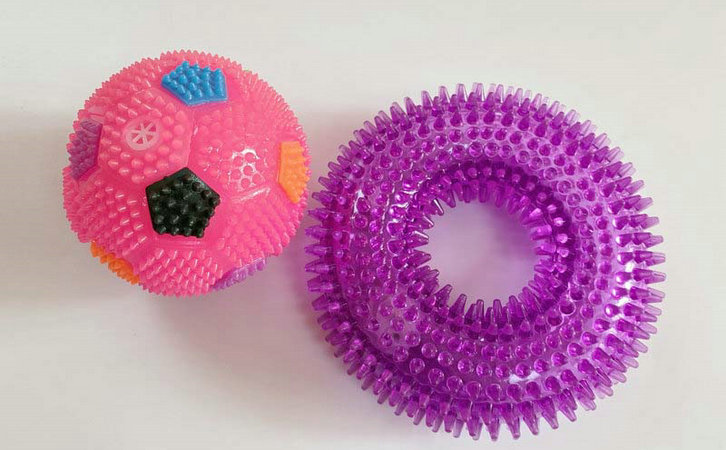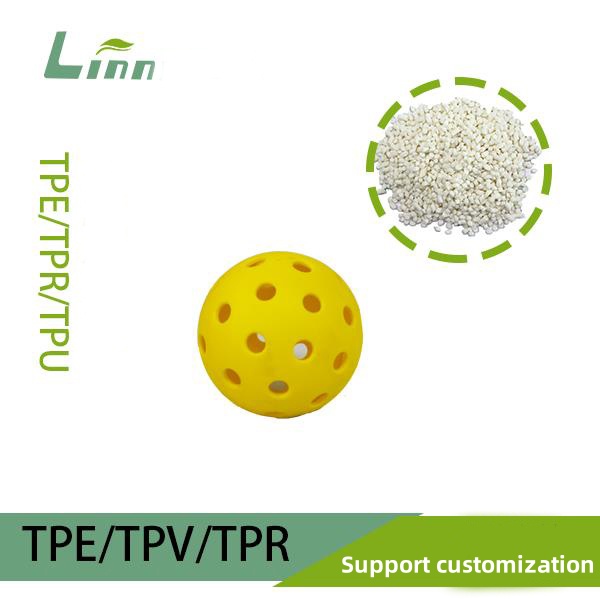I’ve spent years in the trenches of the plastics and rubber industry, working with TPR (Thermoplastic Rubber) on everything from soft grips to shoe soles. One issue that drives manufacturers up the wall is glossy marks—those shiny, uneven patches that appear on TPR products after molding, ruining their look and feel. If you’ve ever pulled a part from the mold only to find it marred by glossy streaks or spots, you know the frustration of wasted time and material. Over the years, I’ve tackled this problem in countless factories, and I’m here to share my practical, field-tested solutions to help you eliminate those glossy marks and keep your production line humming. Let’s dive into the causes, fixes, and prevention strategies to get your TPR parts looking flawless.

What Causes Glossy Marks on TPR Products?
Glossy marks, sometimes called gloss streaks or shine spots, are surface defects that make TPR parts look inconsistent. They’re not just cosmetic—they can signal deeper issues in your process or material. From my experience, the main culprits are:
Mold Surface Finish: A highly polished mold surface can create glossy patches where TPR sticks or cools unevenly, especially if the polish is inconsistent.
Processing Temperatures: Excessive melt temperature (above 200°C for TPR) or mold temperature can cause the material to flow too smoothly, creating shiny areas.
Material Composition: TPR’s additives, like oils or plasticizers, can migrate to the surface during molding, leaving glossy residues.
Uneven Cooling: If the mold cools inconsistently, some areas solidify faster, creating gloss variations between matte and shiny surfaces.
Injection Speed and Pressure: Too-fast injection speeds or high pressures can force TPR to flow unevenly, causing glossy streaks near gates or thin sections.
Mold Release Issues: Improper use of mold release agents or residue buildup can alter surface texture, leading to shiny spots.
I once helped a factory making TPR toy handles where glossy marks were costing them 15% of their output in rejections. After some detective work, we traced the issue to a combination of over-polished molds and high melt temperatures. Pinpointing the cause is key to finding the right fix.
Immediate Fixes for Glossy Marks on TPR Products
If you’re staring at a batch of TPR parts with glossy marks, don’t despair. Here are hands-on solutions I’ve used to salvage parts and get production back on track.
1. Adjust Mold Surface Finish
The mold’s surface plays a huge role in TPR’s final appearance:
Sandblast or Texture the Mold: Apply a light sandblast (e.g., MT-11000 texture) or EDM finish to the mold cavity to create a uniform matte surface. This reduces gloss by diffusing light reflection.
Clean the Mold: Remove oil, residue, or release agent buildup with a solvent like isopropyl alcohol. Use a soft cloth to avoid scratching the mold.
Test Polish Levels: If the mold is too polished, consult your mold maker to reduce the polish level (e.g., from SPI-A1 to SPI-B2).
I once fixed glossy marks on TPR grips by sandblasting the mold to a matte finish, which eliminated 90% of the shine in one go.
2. Optimize Processing Parameters
Tweaking your injection molding settings can often resolve glossy marks:
Lower Melt Temperature: Reduce the barrel temperature to the lower end of TPR’s range (160-180°C for SBS-based, 170-190°C for SEBS-based) to minimize surface gloss.
Decrease Mold Temperature: Set the mold temperature to 20-30°C to promote uniform cooling and reduce shiny patches.
Slow Injection Speed: Reduce injection speed by 10-20% to allow smoother material flow, preventing glossy streaks near gates.
Adjust Holding Pressure: Lower holding pressure by 5-10 MPa to avoid over-packing, which can cause glossy spots in thick sections.
A client producing TPR shoe soles cut glossy marks by dropping their melt temperature from 210°C to 180°C and slowing the injection speed.

3. Use Mold Release Agents Sparingly
Mold release agents can be a double-edged sword:
Switch to Non-Silicone Releases: Use water-based or low-residue release agents designed for TPR to avoid glossy residues.
Apply Thinly: Spray a light, even coat and wipe excess with a clean cloth. Over-application can create shiny patches.
Clean Regularly: Clean the mold after every 50-100 cycles to prevent release agent buildup.
4. Post-Molding Surface Treatment
For parts already molded with glossy marks:
Sandblast or Abrade: Lightly sandblast the parts with fine media (e.g., glass beads) to create a matte finish. Test on a sample to ensure it doesn’t affect functionality.
Apply Matte Coating: Use a matte polyurethane or acrylic coating to mask glossy areas. Ensure the coating is compatible with TPR’s flexibility.
Clean with Alcohol: Wipe parts with isopropyl alcohol to remove surface oils contributing to gloss. This works best for mild cases.
Caution: Test all fixes on a small batch to avoid damaging parts or affecting performance. Document changes to track what works best.
Long-Term Strategies to Prevent Glossy Marks
Fixing glossy marks is great, but preventing them is better. Here are strategies I’ve implemented to keep TPR parts consistently matte and defect-free:
1. Optimize Mold Design and Maintenance
A well-designed mold sets the stage for flawless parts:
Specify Matte Finishes: Work with your mold maker to apply a consistent matte texture (e.g., VDI 3400 or MT-11010) across the cavity during mold fabrication.
Add Venting: Ensure adequate vents (0.02-0.05 mm deep) to release trapped air, which can cause glossy spots by altering cooling rates.
Regular Maintenance: Polish or retexture the mold every 10,000 cycles to maintain consistent surface quality. According to Plastics Technology, proper mold maintenance can reduce surface defects by 25%.
Use Cooling Simulation: Use software like Moldflow to optimize cooling channel placement, ensuring uniform mold temperatures.
I helped a factory eliminate glossy marks on TPR seals by retexturing their molds and adding vents near problematic areas.

2. Standardize Processing Conditions
Consistency in molding parameters prevents gloss variations:
Create a Settings Chart: Develop a reference sheet for each TPR grade, listing optimal melt temperature, mold temperature, injection speed, and holding pressure.
Calibrate Machines: Check injection molding machines monthly for temperature and pressure accuracy to avoid unintended gloss.
Monitor Cycle Times: Keep cycle times consistent (typically 20-40 seconds for TPR) to ensure uniform cooling and surface finish.
3. Work Closely with Material Suppliers
The TPR formulation can influence gloss:
Request Low-Gloss Grades: Ask your supplier for TPR with reduced oil or plasticizer content, as these can increase surface shine. Request a Certificate of Analysis (COA) to verify formulation.
Test SEBS-Based TPR: SEBS-based TPR often produces less gloss than SBS-based TPR due to lower oil migration.
Check Filler Content: Ensure fillers like calcium carbonate are balanced (10-20% by weight) to promote a matte finish without compromising elasticity.
A client I worked with switched to a low-gloss SEBS-based TPR for their toy parts, reducing glossy marks by 80% without changing their process.
4. Implement Robust Quality Control
Catch glossy marks before they reach customers:
Visual Inspections: Train operators to check parts for gloss under consistent lighting after every cycle.
Surface Testing: Use a gloss meter to measure surface shine (e.g., <20 GU for matte finishes) on random samples from each batch.
Supplier Audits: Visit your TPR supplier annually to review their compounding process and ensure consistent material quality.
Here’s a table summarizing these preventive strategies:
|
Strategy |
Action |
Expected Outcome |
|---|---|---|
|
Mold Design |
Matte texture, adequate venting, regular maintenance |
Consistent matte finish, fewer glossy spots |
|
Processing Conditions |
Standardized settings, machine calibration, consistent cycle times |
Uniform surface appearance |
|
Material Selection |
Low-gloss TPR, SEBS-based grades, balanced fillers |
Reduced surface shine |
|
Quality Control |
Visual inspections, gloss meter testing, supplier audits |
Early detection of gloss defects |
Real-Life Case Study
Let me share a story from my consulting days to show how these solutions come together. A factory I worked with was producing TPR yoga mat grips that kept coming out with glossy streaks near the edges, leading to 20% customer returns. The pressure was on to fix it before losing a major contract.
We attacked the problem on multiple fronts:
Immediate Fix: Lowered the melt temperature from 205°C to 180°C and applied a light sandblast to the mold, reducing gloss by 60% in the first run.
Mold Adjustment: Added 0.03 mm vents near the gate and retextured the cavity to a VDI 3400 matte finish.
Material Change: Switched to a low-gloss SEBS-based TPR with 15% calcium carbonate filler, which further minimized shine.
Process Standardization: Created a parameter sheet for operators, locking in optimal settings (175°C melt, 25°C mold, 30 MPa holding pressure).
Within a week, glossy marks dropped to under 2%, and the client saved their contract. They later invested in a gloss meter for QC, which helped maintain consistent quality.

Additional Tips for TPR Molding Success
To keep your TPR products free of glossy marks and other defects, here are some extra insights from my experience:
1. Train Your Team Thoroughly
Glossy marks often go unnoticed without proper training:
Operator Workshops: Hold biannual sessions on TPR molding, focusing on spotting surface defects and adjusting parameters.
QC Checklists: Provide inspectors with a checklist for gloss, including lighting conditions and acceptable gloss units (GU).
2. Leverage Industry Knowledge
Stay ahead of surface defects by tapping into resources:
Trade Shows: Attend events like Chinaplas to learn about low-gloss TPR grades and mold texturing techniques.
Technical Forums: Engage with communities on platforms like SPE Plastics for peer advice on TPR processing.
3. Experiment with Post-Processing
For high-end applications, consider:
Laser Texturing: Apply micro-textures to parts post-molding for a premium matte finish. This is costly but effective for luxury products.
Vapor Blasting: Use vapor blasting for a uniform matte look on finished parts, especially for small batches.
4. Keep Detailed Records
Log every glossy mark incident, including:
Mold condition and texture
Processing parameters
Material batch details
Fixes applied This data helps you identify trends and refine your process over time.

Frequently Asked Questions
To wrap up, here are answers to common questions I’ve heard from factory managers and technicians about glossy marks on TPR:
Q1: Can I remove glossy marks from finished TPR parts?
A: Yes, light sandblasting or matte coatings can mask glossy marks. For mild cases, wiping with isopropyl alcohol may help. Always test on a sample to ensure functionality isn’t compromised.
Q2: How do I know if my mold is too polished?
A: If parts consistently show glossy patches, especially in thin or high-flow areas, the mold may be over-polished. Measure the mold’s surface with a profilometer or consult your mold maker for a matte retexture.
Q3: Does TPR grade affect glossy marks?
A: Absolutely. SBS-based TPR with high oil content is glossier than SEBS-based TPR. Ask your supplier for low-gloss grades with balanced fillers.
Q4: Can mold release agents cause glossy marks?
A: Yes, especially silicone-based or over-applied releases. Switch to water-based agents and clean the mold regularly to prevent buildup.
Q5: How do I justify mold retexturing costs to management?
A: Calculate the cost of scrap, rework, and customer rejections due to glossy marks. Compare that to the one-time cost of retexturing (typically $500-$2000 per mold) to show long-term savings.
Final Words
Glossy marks on TPR products can be a real thorn in your side, but they’re not insurmountable. With the right mix of mold adjustments, process tweaks, and material choices, you can banish those shiny defects and deliver parts that look and perform as intended. The solutions I’ve shared come from years of getting my hands dirty on factory floors, and I hope they give you the confidence to tackle this issue head-on. If you’re grappling with a stubborn case of glossy marks or just want to geek out over TPR molding, leave a comment—I’d love to swap ideas and help you keep your production line shining (but not too shiny!).





